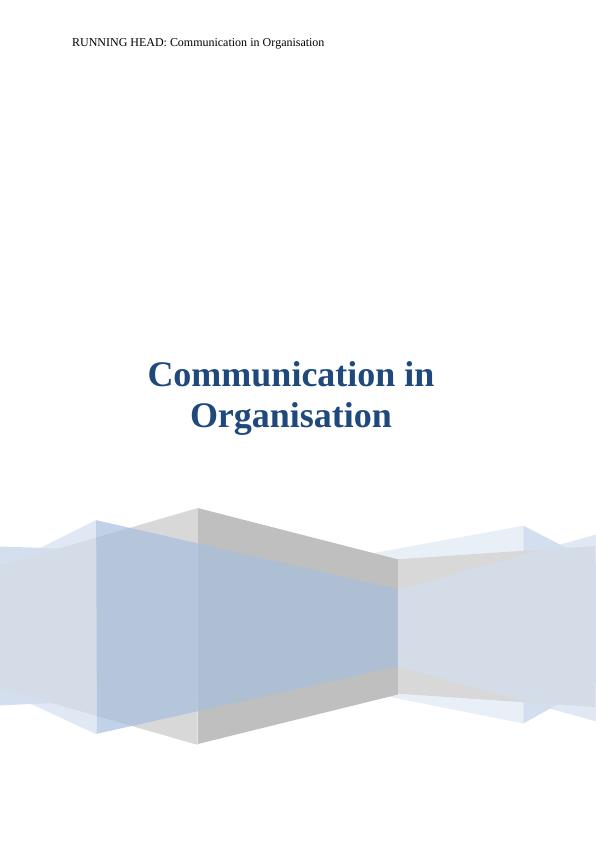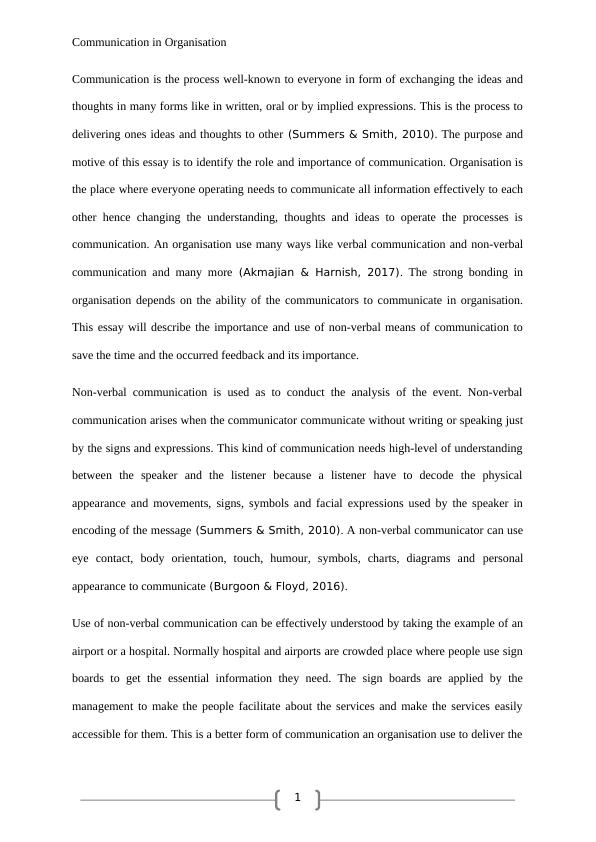Communication in Organisation
Analyzing an observed communication event by applying two communication concepts from Topics 1-3 and describing the insights gained from the process.
7 Pages1589 Words316 Views
Added on 2022-10-04
About This Document
This essay describes the importance and role of communication in organisation. It emphasizes on the use of non-verbal communication and the importance of active listening and feedback in effective communication.
Communication in Organisation
Analyzing an observed communication event by applying two communication concepts from Topics 1-3 and describing the insights gained from the process.
Added on 2022-10-04
ShareRelated Documents
End of preview
Want to access all the pages? Upload your documents or become a member.
Communication: Verbal and Non-Verbal, Formal and Informal, Barriers to Communication
|4
|1006
|296
Principles of Communication
|6
|798
|183
Interpersonal Communication Skill of Feedback | Report
|4
|436
|26
Verbal And Non-Verbal Cues
|4
|954
|23
Pragmatic Language Communication
|4
|722
|143
Theories, Principles and Models for Inspirational Teaching and Learning
|15
|897
|439



